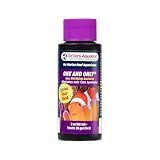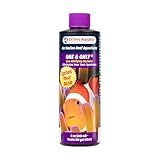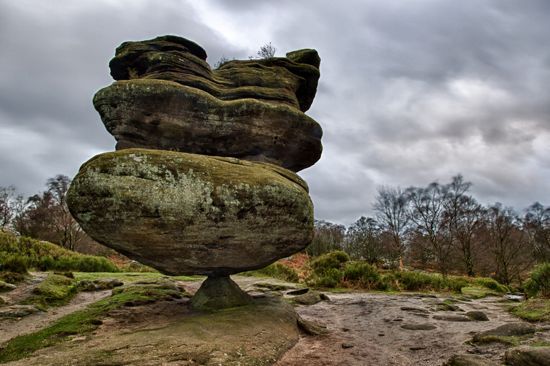Best Nitrifying Cycle Products to Buy in January 2026

DrTim’s Aquatics One & Only Live Nitrifying Solution – 2 oz – for Freshwater Fish Tanks – Supports Aquarium Cycling and Water Balance – Treats Up to 30 Gallons
- PROMOTES NATURAL BALANCE FOR FRESHWATER AQUARIUMS INSTANTLY!
- EASY APPLICATION: NO WAIT TO ADD FISH AFTER TREATMENT!
- CONVENIENT 2 OZ BOTTLE TREATS UP TO 30 GALLONS!



DrTim’s Aquatics One & Only Nitrifying Solution – 8 oz – for Marine, Reef, and Nano Fish Tanks – Supports Aquarium Cycling and Water Balance
-
EASY NEW TANK SETUP: QUICKLY BALANCE ENVIRONMENTS WITHOUT FISH STRESS.
-
INSTANT BIOLOGICAL FILTER: CONVENIENT LIQUID FORMULA ESTABLISHES FILTRATION FAST.
-
SAFE FOR ALL AQUARIUMS: IDEAL FOR REEFS, NANOS, AND SEAHORSES ALIKE.



Brightwell Aquatics MicroBacterStart XLF - 15X Concentrated Live Tank Starter for Cycling New Freshwater Aquarium and Establishing Nitrifying Bacteria
- RAPIDLY ESTABLISHES BIOLOGICAL FILTRATION IN NEW AQUARIUMS.
- QUICKLY RESTORES NITRIFICATION AFTER CLEANING OR EMERGENCIES.
- PREVENTS “NEW TANK SYNDROME” FOR HEALTHIER FISH POPULATIONS.



TLC Products, StartSmart Complete, Saltwater: Cycling, Clarifier, Maintenance, 8 oz. (236 ml)
- ALL-IN-ONE SOLUTION FOR CYCLING, CLARITY, AND ONGOING MAINTENANCE.
- ESTABLISH BENEFICIAL FILTRATION FOR NEW TANKS EFFORTLESSLY.
- CLEAR CLOUDY WATER IN 12-24 HOURS FOR A PRISTINE AQUARIUM.


Sometimes it “just happens”. Sometimes it seems it never will. A balanced pond is what we all desire because it provides a safer environment for aquatic life and a cleaner pond for us to enjoy.
Mother Nature has a way of balancing her own water systems. She continually runs fresh water through her lakes and streams and adds just enough life to the waters to keep them healthy and void of toxic substances. She doesn’t overpopulate her waters. Though it may seem cruel she allows only the strongest individuals of each species to survive so that the species itself remains healthy. She keeps her water balanced by creating what we call the Nitrifying Cycle.
The Nitrifying Cycle
Fish naturally eat worms and algae and other organic materials that might be present in the pond. Just like humans fish create waste. Also just like with humans waste is toxic to the fish. Fish waste and dead leaves create ammonia in the water and if the nitrifying cycle is not functioning the ammonia in the water will kill the fish. Mother Nature’s way of solving this problem is to create a bacteria called Nitrosomonas that converts ammonia to nitrites. Nitrites is still very lethal to fish so Mother Nature creates another bacteria called Nitrobacter that converts deadly nitrites to nitrates which is basically fertilizer. Plants in the water, including algae, take nourishment from these nitrates and reduce the amount of nitrates in the water, rendering the water fish safe. Of course, then the fish eat the plants and the cycle starts all over again.
When either of the two beneficial bacteria, Nitrosomonas and Nitrobacter, are not present in the pond the water will test high in ammonia and/or nitrites.
Complications of Ammonia
The presence of high ammonia will burn the gills of the fish and the fish will die unless the ammonia is neutralized by an ammonia blocker or an immediate water change is made. The fish can’t breath if their gills are damaged and you’ll notice that they hang by the water return or float at the top of the water as if gasping for air. Upon examination, the gills are gray in color or the tissue appears burned away. There is good news if the fish survive the initial ammonia spike. The tissue does regenerate over time and the fish should return to good health.
Nitrite Poisoning
The term “Nitrite Poisoning” is used whenever fish experience complications from a high content of nitrites in their water. It doesn’t act like ammonia and burn the gills. Instead, nitrites travel through the blood system, poisoning the fish and turning the blood brown instead of red. Nitrites can be more deadly than ammonia simply because it stays with the fish longer and can do more permanent harm. An immediate water change is once again necessary if the water tests high in nitrites. Adding non-iodized salt to the water will help neutralize the continuing intake of nitrites into the fish’s blood system. Other corrective action must be taken along with the salt. Since high nitrites indicates a low presence of the Nitrobacter bacteria (the one that changes nitrites to nitrates) it is necessary to help establish the bacteria by cutting down on feeding, reducing the fish load and/or increasing biofiltration.
High Nitrates
Nitrates are basically fertilizer for plants. Until recently nitrates were not taken seriously and testing for nitrates was not encouraged. Studies have shown that high concentrations of nitrates can be harmful to fish. High nitrate readings in water have been attributed to swim bladder problems, such as fancy goldfish turning upside down. In fact, in all our tanks that house fancy goldfish that are beginning to “flip over” we found high readings of nitrates. Though we’re not convinced yet that high nitrates is the culprit we’re taking testing for nitrates more seriously and considering high nitrates a stress factor. High nitrates are associated with blood in the fins and weak fish. An easy way to bring down the concentration of nitrates is to add plants to the tank to consume the fertilizer.
What Throws Us Out of Balance
Mother Nature continually refreshes her water by way of streams and rivers. A stagnant lake becomes a death trap for aquatic life. If a tally was done, we’d probably find that her ratio is one fish to a couple of thousand gallons of water! I’ve seen our decorative ponds where the ratio is more like ten fish to one-hundred gallons of water. That’s why ponds constructed by man (or woman...) cannot rely on “natural filtration” methods such as using plants as the only filtration. That’s why we preach the importance of adding biofiltration. We are the ones who throw Mother Nature’s balance off by exceeding the fish-to-water ratio and by recirculating the same water. We create our own little water world and place aquatic life into it. It’s our responsibility to attain and maintain balance in the pond.
How Do I Balance?
Let me count the ways...ONE!
Install biological filtration. True biofilters, such as the ProBead, not only take solids out of the water to help keep your pond clean, they provide housing for those two very necessary nitrifying bacteria, Nitrobacter and Nitrosomonas.
